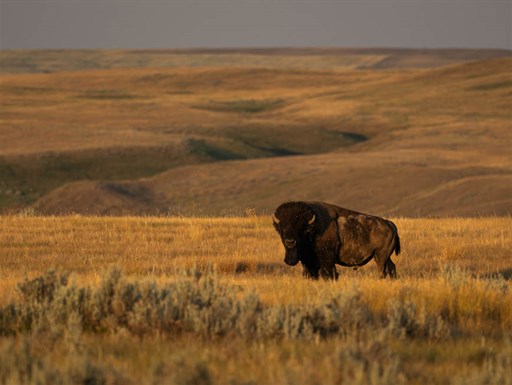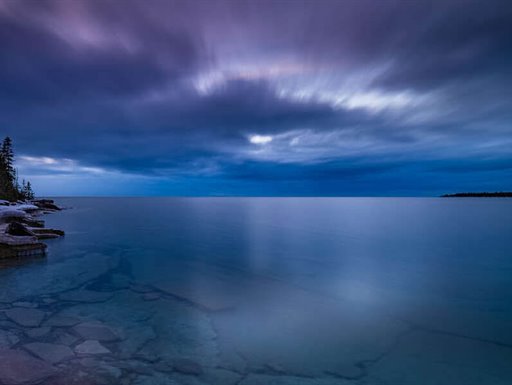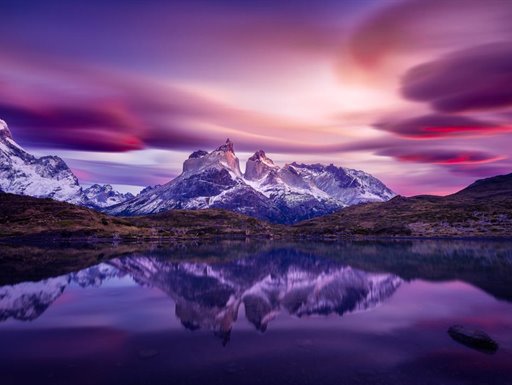Here you will find an ever increasing range of articles covering technique and tips on using our cameras and lenses.
I have always loved water since I was a child, and have been fascinated by the ocean and its inhabitants. It’s a world that seems so foreign and infinite to us. Magical, colourful and full of weird and wonderful protagonists. But how could I share my experiences from the depths of the world’s oceans? The answer was by making the short leap from diving to underwater photography. A passion, an obsession almost, that continues to take me to the most beautiful and remote locations on our blue planet.
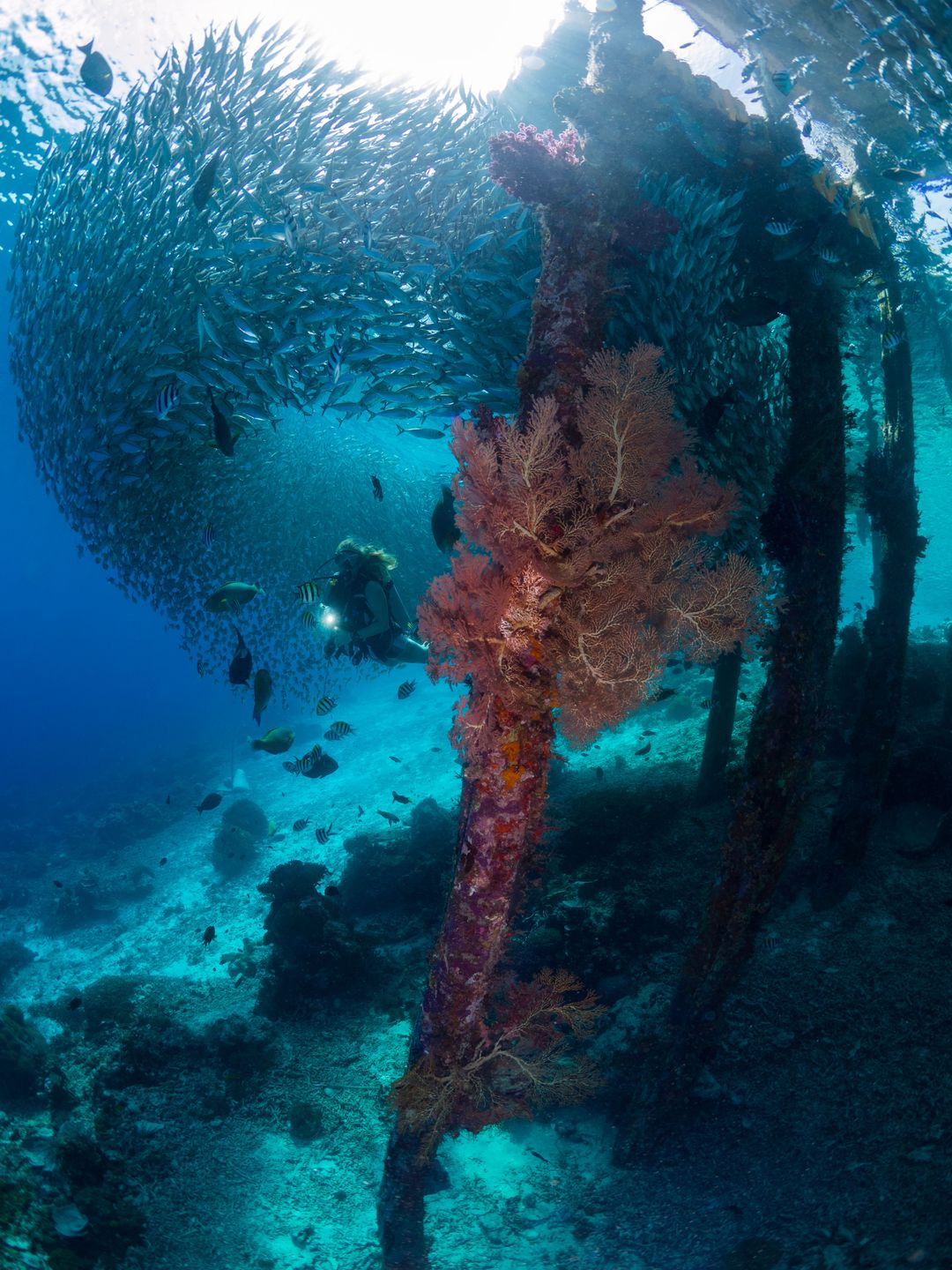
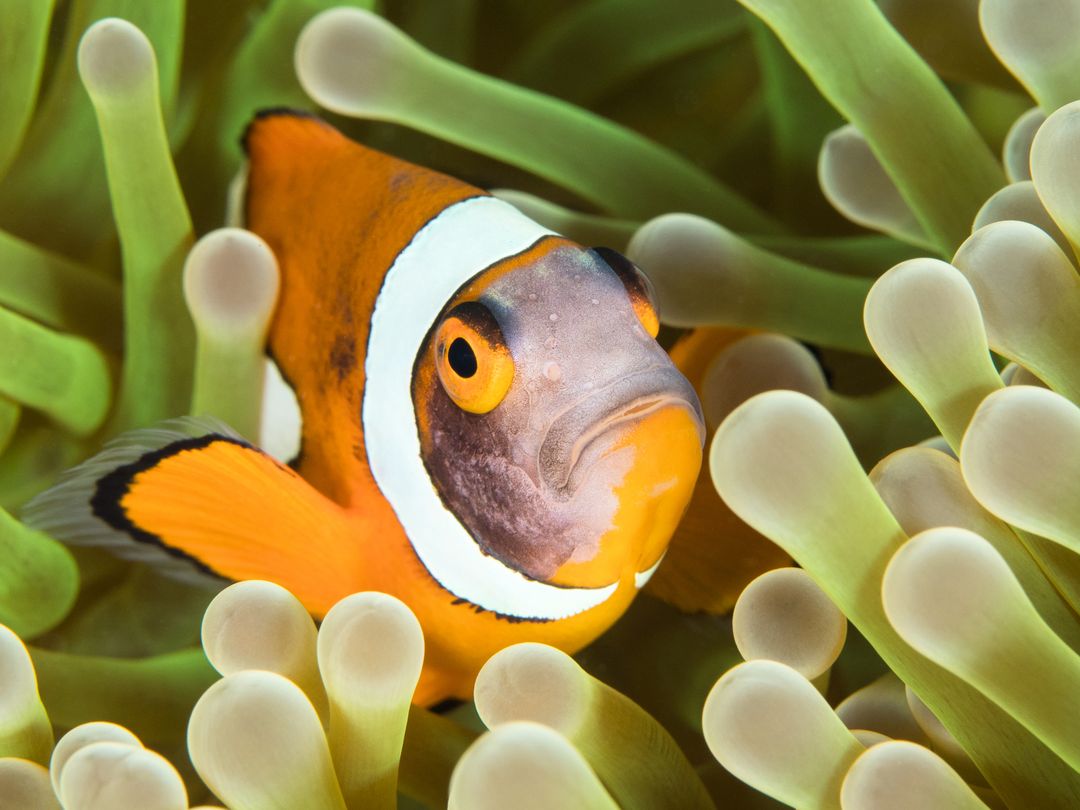
Underwater photography isn’t so much about HDR, focus stacking, internal ND filters and high resolution shots. So, it’s pretty straightforward, right? Think again. Underwater photographers have to deal with strong currents and challenging light conditions. It’s very difficult to predict what situations you may come up against. Your subjects are often shy, disappearing out of view in the very same moment they are captured by the camera’s autofocus. That’s precisely why underwater photographers have to be quick, and know their equipment inside-out. They need to be able to adjust any setting at the drop of a hat. Manually adjusting all the settings in order to allow free rein for image composition is one of the core skills in underwater photography. This is where OM SYSTEM really impresses, with its well laid-out menu and ease of use. Settings can be changed in the blink of an eye, giving you plenty of time to think about your subject and image composition.
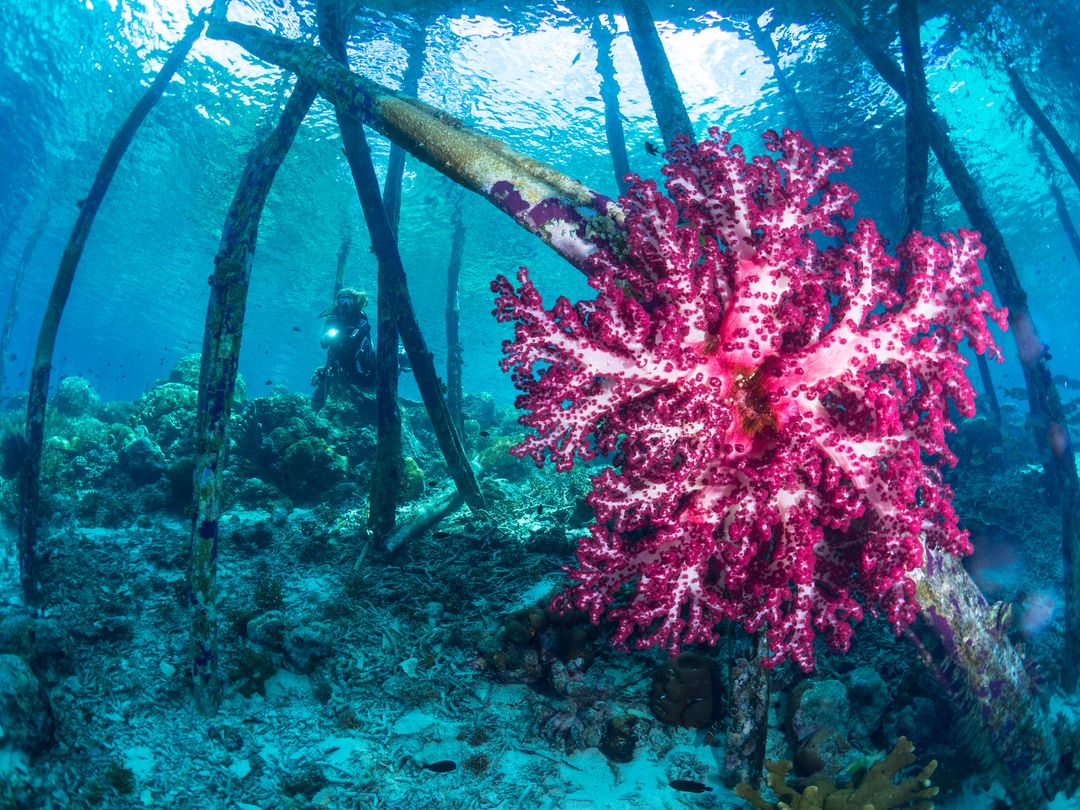
Unfortunately, in underwater photography things don't always go to plan. You can’t always be in the right place at the right time. Sometimes you might even have attached the wrong lens. Trying to photograph an enormous manta ray or a 12-metre-long whale shark with a macro lens can be somewhat of an insurmountable task. In fact, it’s simply not possible. So, as the manta ray or whale shark swims on by, the underwater photographer must content themselves with a picture of a tiny orang-utan crab instead. That’s why it’s important to know in advance whether a macro or a wide-angle lens is going to be more suitable for an upcoming dive. Is 60 mm or 8 mm preferable?
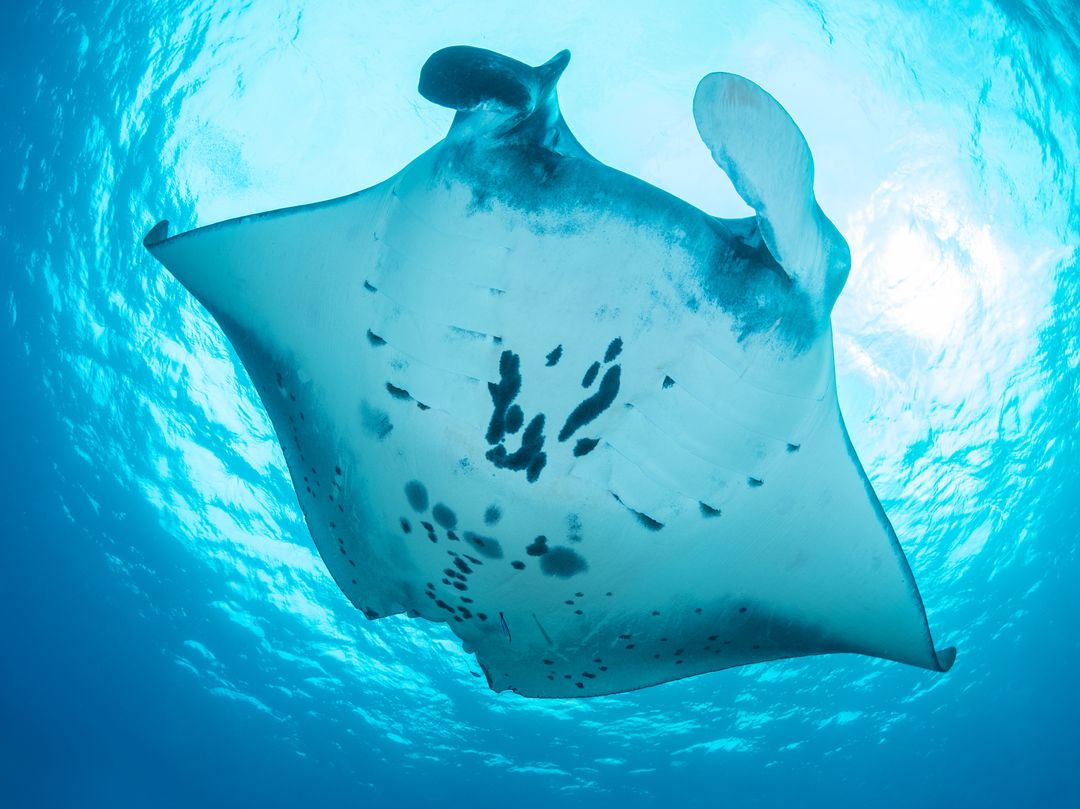
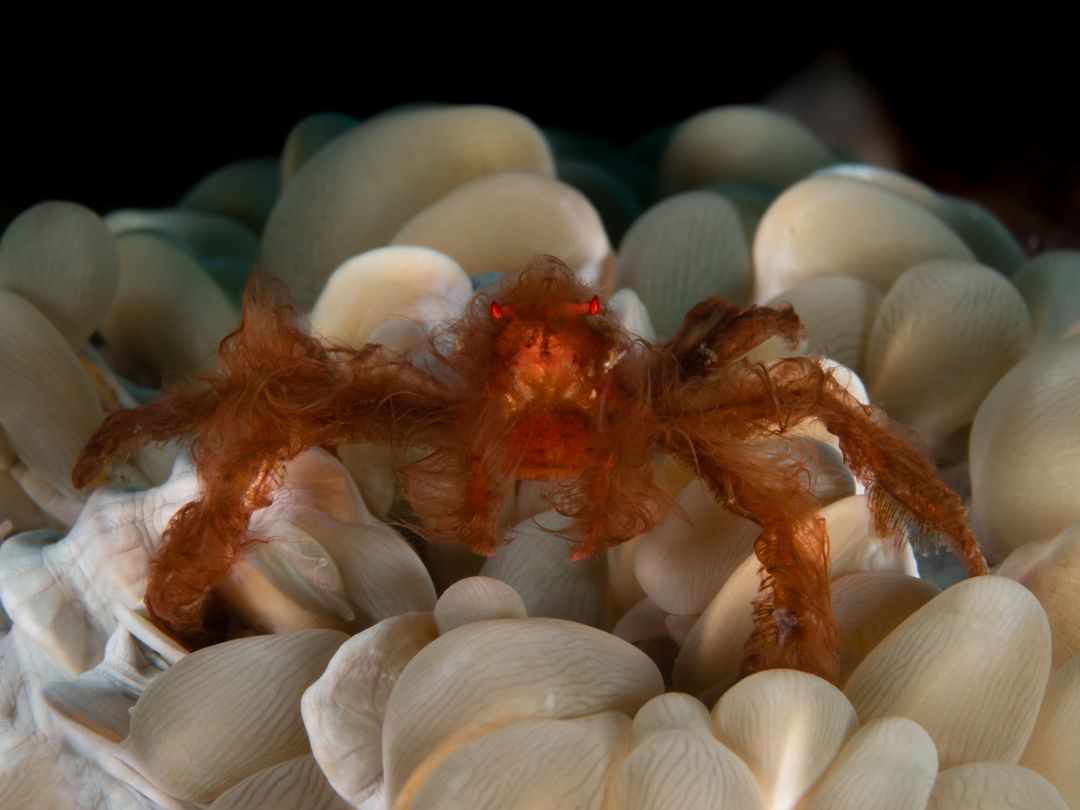
Playing with aperture, adjusting the depth of field, is one of the most important aspects of composition for me. With the M.Zuiko Digital ED 60 mm F2.8 macro lens I can really unleash my creativity, and the short focus limit of the lens allows me to capture the smallest of organisms and the finest of details. Many ocean inhabitants are no larger than a grain of rice, and are barely visible to the naked eye. No problem for the M.Zuiko Digital ED 60 mm F2.8 macro lens!
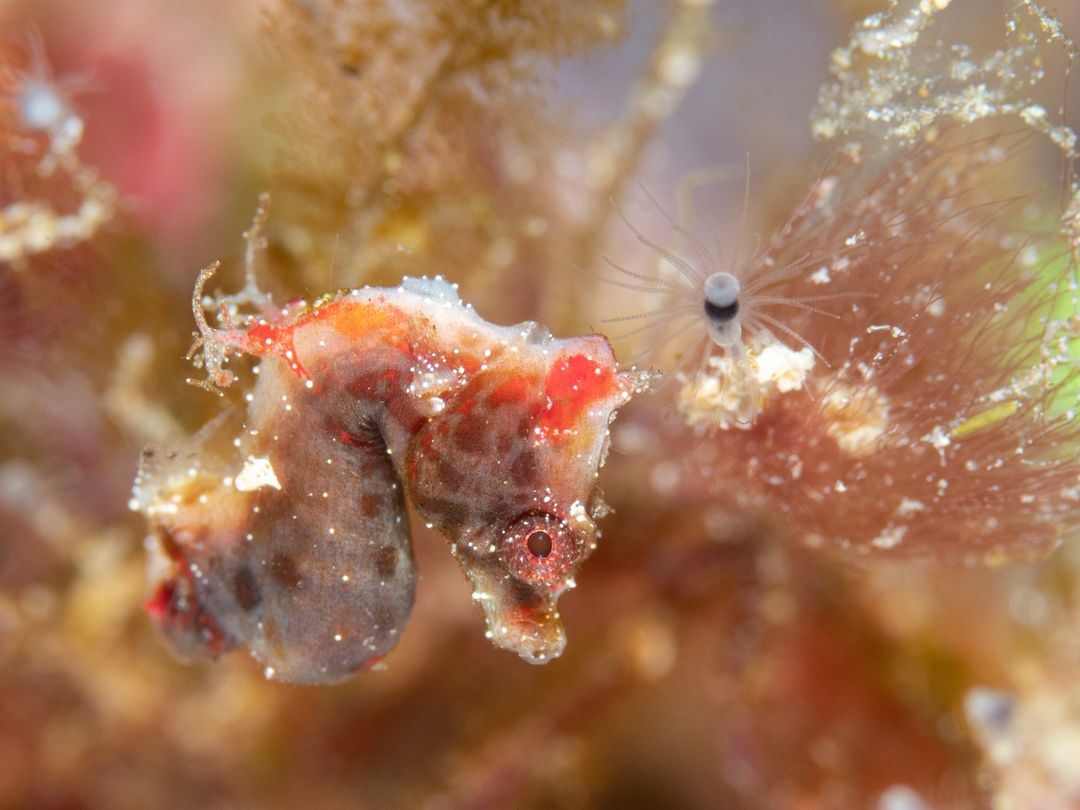
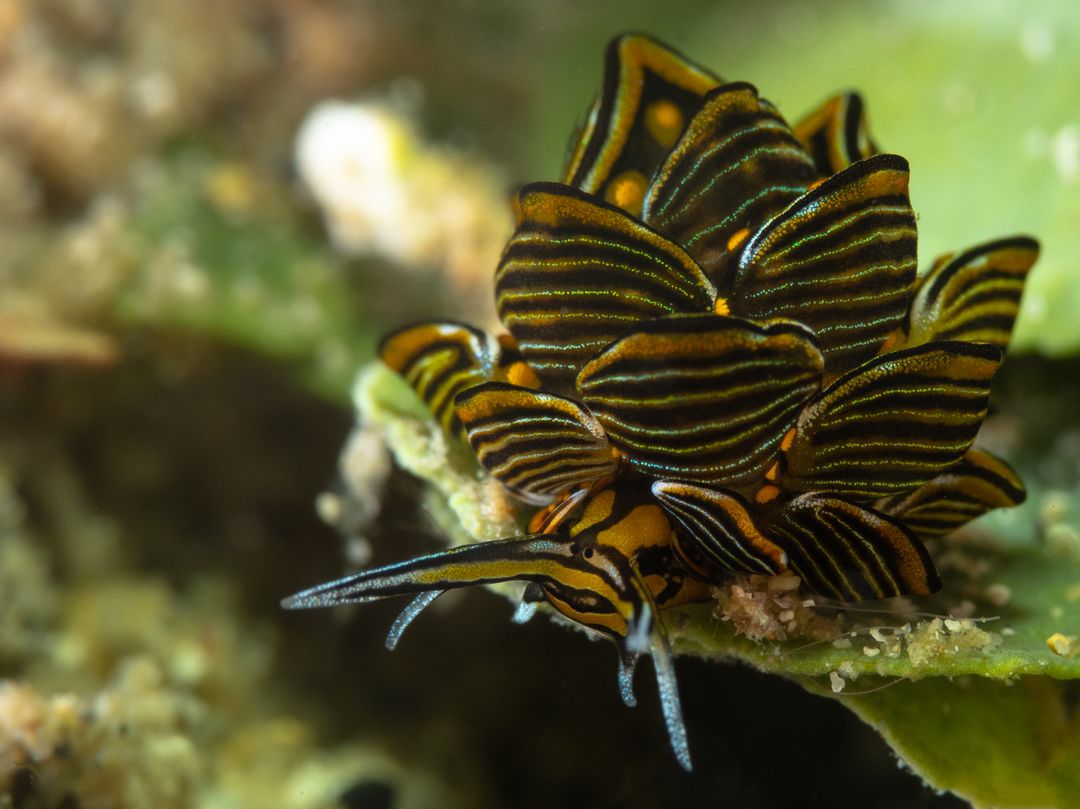
Thanks to its incredible brightness settings and a 2.8 aperture, I can use the M.Zuiko Digital ED 60 mm F2.8 macro lens even in extremely poor light conditions. In this scenario, it's important to use one or even two flashes. After all, without light there is no colour. Only by illuminating the subject can you make the colours pop and really capture their full range. Flashes also reduce shutter speed and make it possible to capture fast-moving subjects and details with pin-sharp resolution.
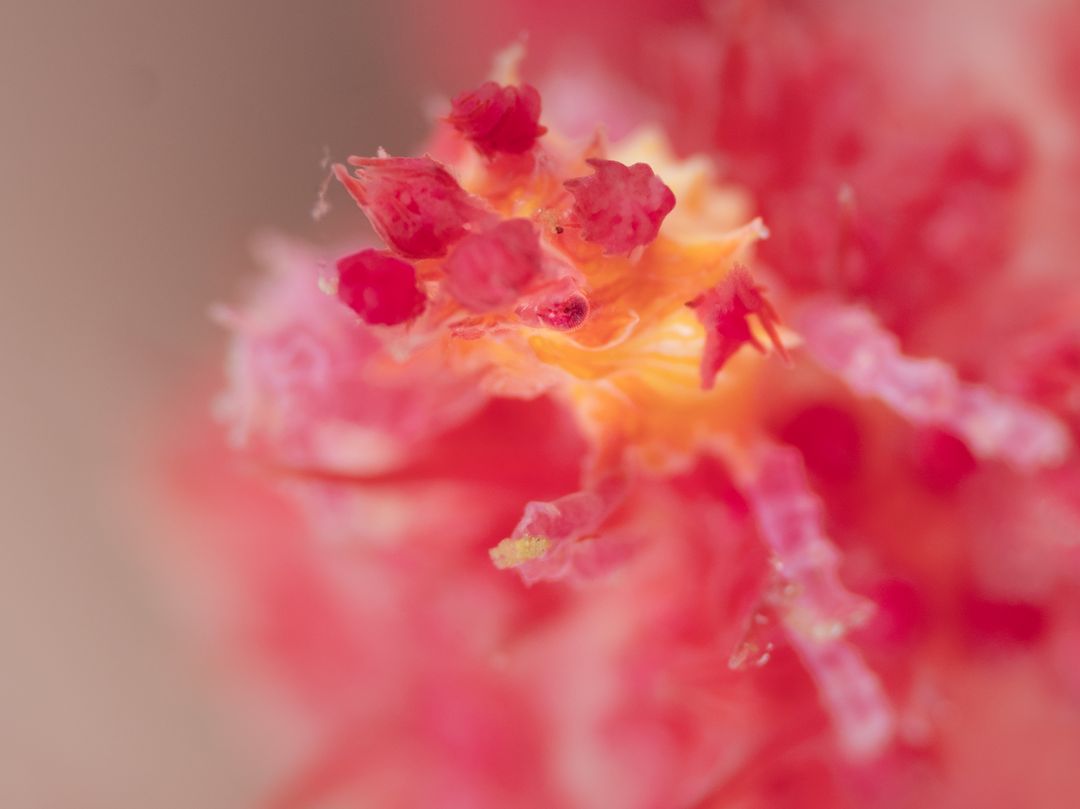
Underwater photographers have long known that the smallest of creatures can have a big impact. These critters, tiny lifeforms that are as obscure as they are bizarre, are often found at ‘muck diving’ sites. These are sandy, muddy underwater deserts with few signs of life. It is only when you take a closer look that you enter a macrocosm that makes every underwater photographer’s heart beat that little bit faster. Autofocus set to SPOT, aperture set to 2.8 or 22, depending on the desired depth of field. ISO 200 and a shutter speed of between 1/80 and 1/250. With my OM-D E-M1 Mark III or the new OM-1 I have unparalleled artistic and creative freedom.
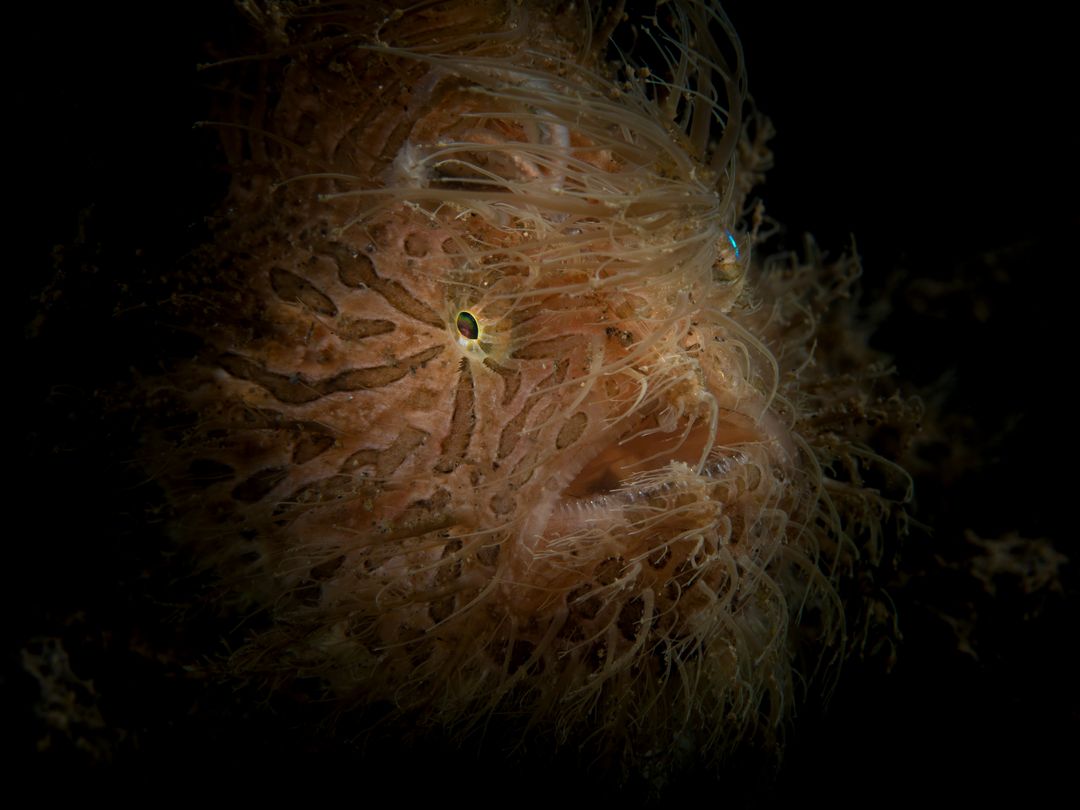
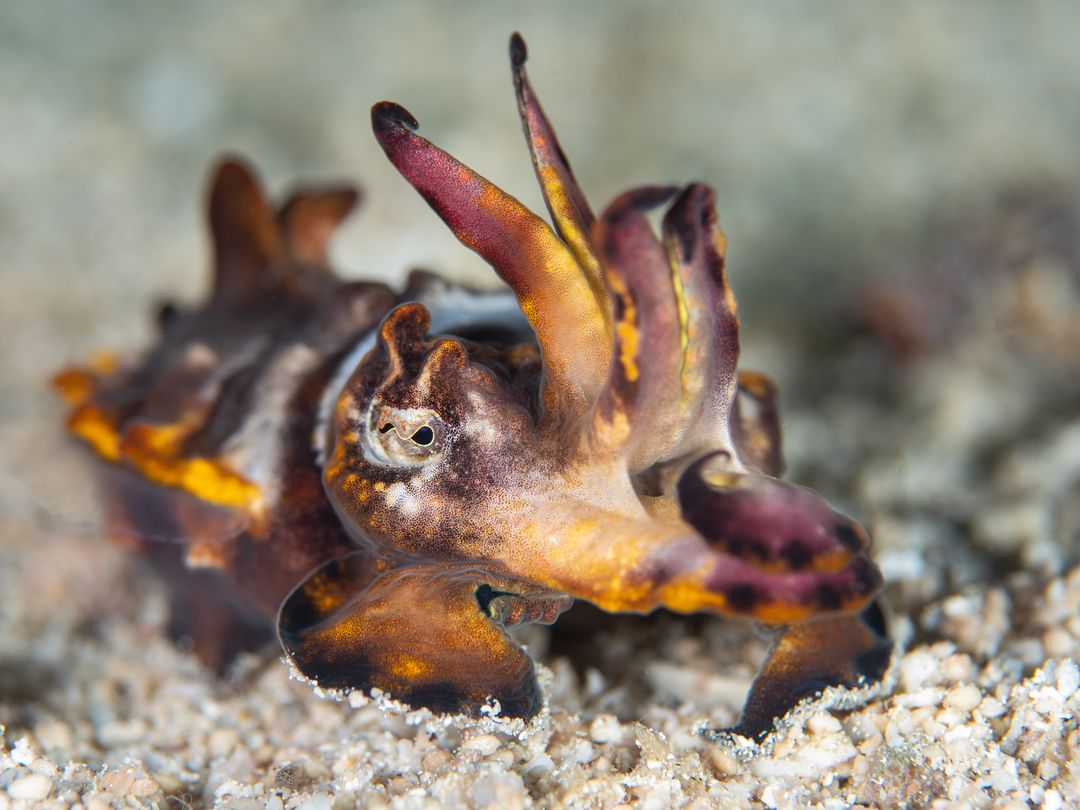
But how do you capture entire reef landscapes, large fish or sunken ships? OM SYSTEM has just the ticket once again in the form of a creative tool that meets my highest requirements and leaves nothing to be desired: the M.Zuiko Digital ED 8 mm F1.8 Fisheye PRO. With an aperture of 1.8, it is the ideal lens for low light conditions. What's more, at 8 mm it is a lens that allows me to capture underwater scenes in their entirety. For anyone who wants a little more flexibility, there is also the M.Zuiko Digital ED 8.25 mm F4.0 PRO, the new high-performance zoom lens that covers a range from 8 mm ultra wide-angle to standard 25 mm whilst ensuring fantastic image quality.
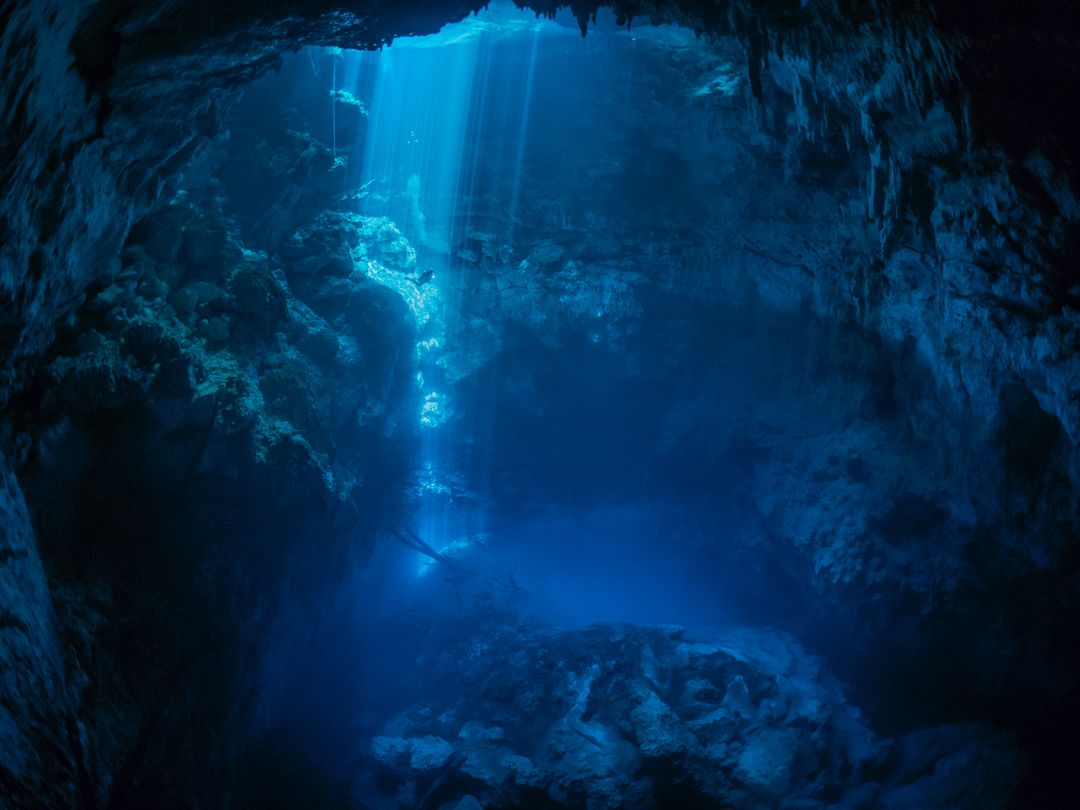
The interesting fisheye effect is one of the most important creative tools underwater. It allows you to get up close and personal with your subject without losing sight of the activity and colour dominance in the background. Another creative option is incorporating natural light into the image composition. Here, the OM-D E-M1 Mark III or OM-1 really stand out thanks to their remarkable dynamics, rich colour contrast and, with the addition of the Olympus Pro lens, their ability to capture multiple fine details.
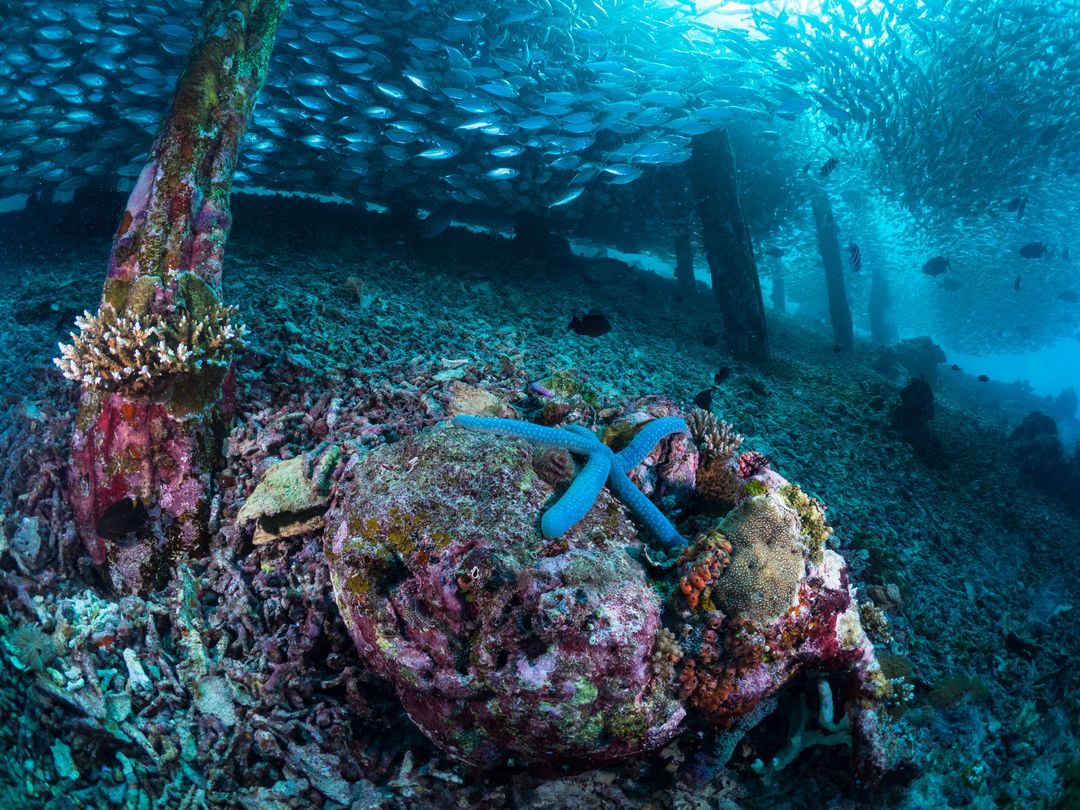
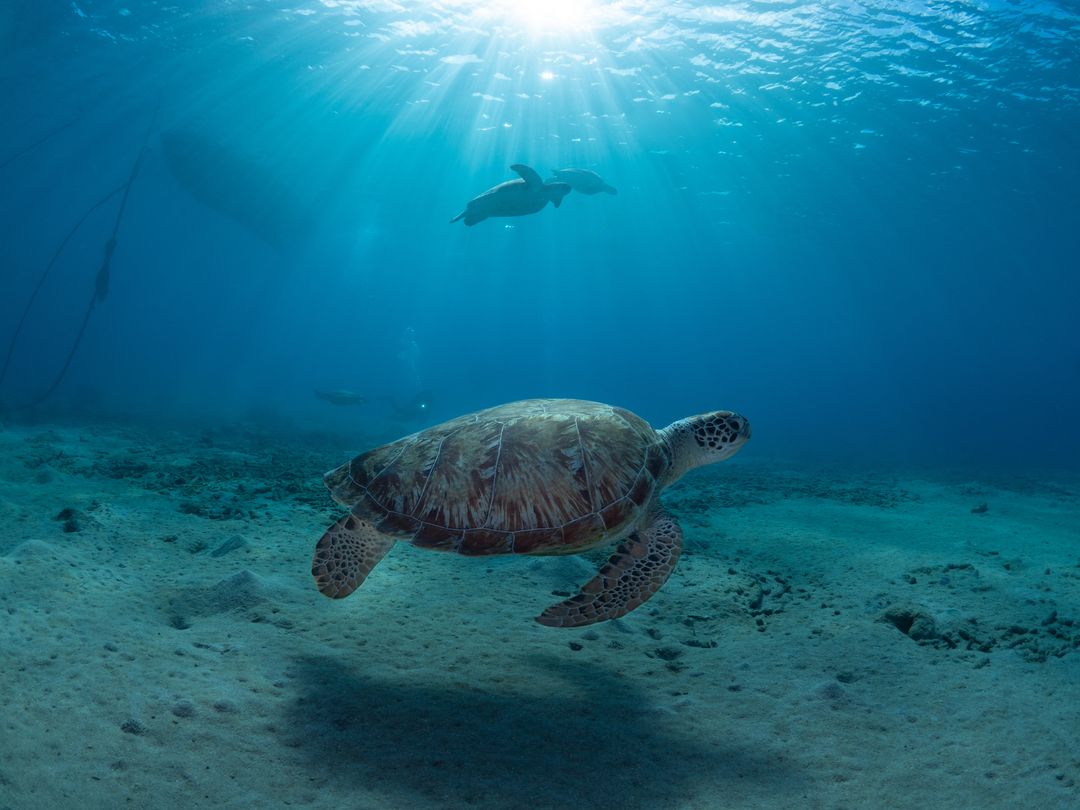
The main thing I love about my cameras is their rapid autofocus. This is a real game-changer when photographing fast-moving underwater subjects. Another thing that makes the camera and its lenses unbeatable in terms of quality is the fact that they are lightweight and have a great feel to them. This is particularly important for travelling underwater photographers, who often have to contend with the vagaries of hand luggage limits. Anyone who has recently travelled to South-East Asia or the Caribbean with a heavily loaded bag will surely appreciate the benefits of the compact and light OM SYSTEM, and like me will certainly find it impossible to imagine life without it. But in case you do still have a little room left in your hand luggage, the new M.Zuiko Digital ED 90 mm F3.5 macro IS PRO lens should squeeze in there perfectly.

David Benz Website
